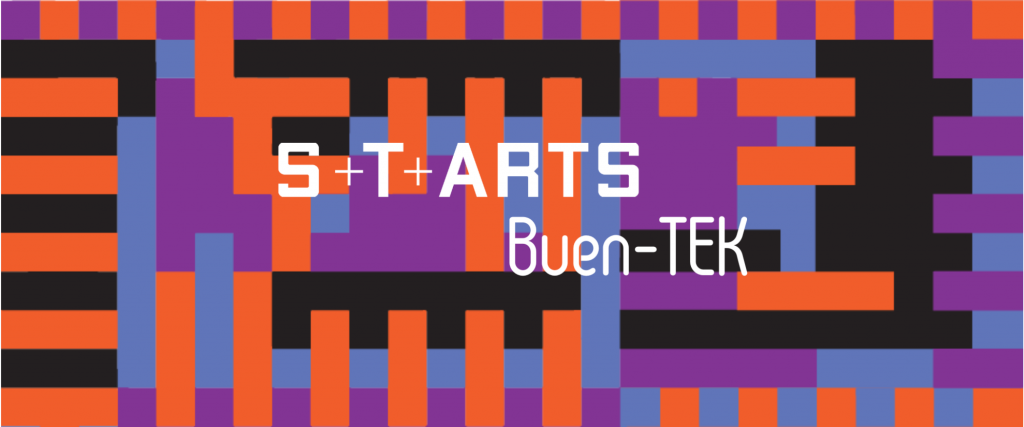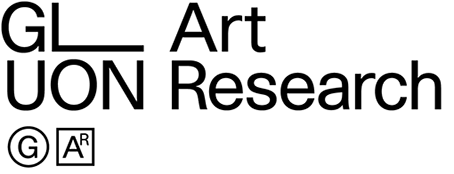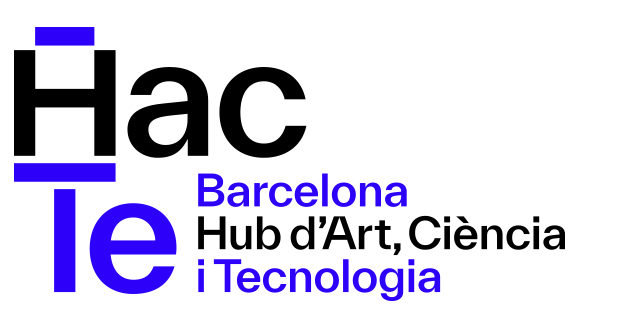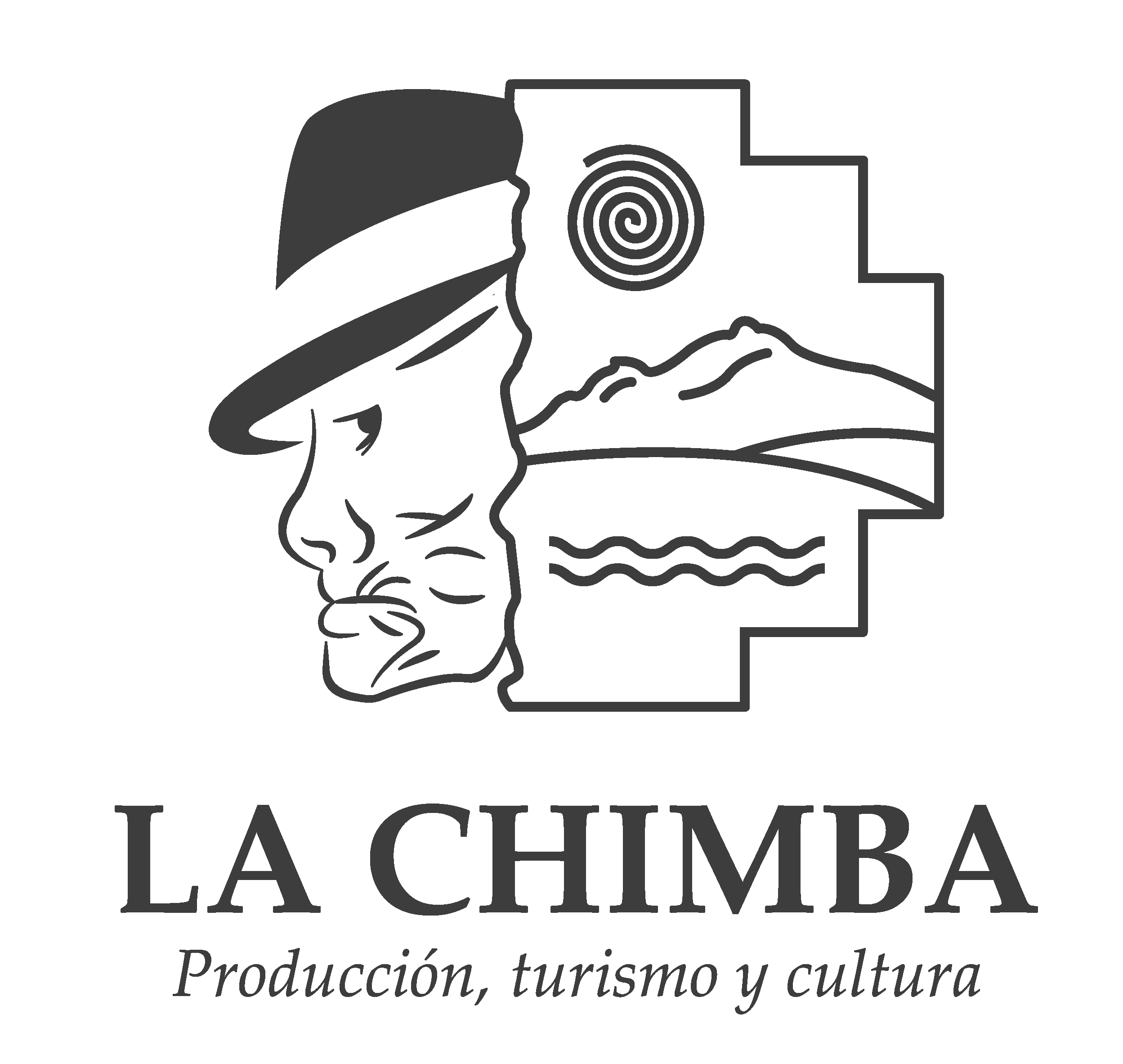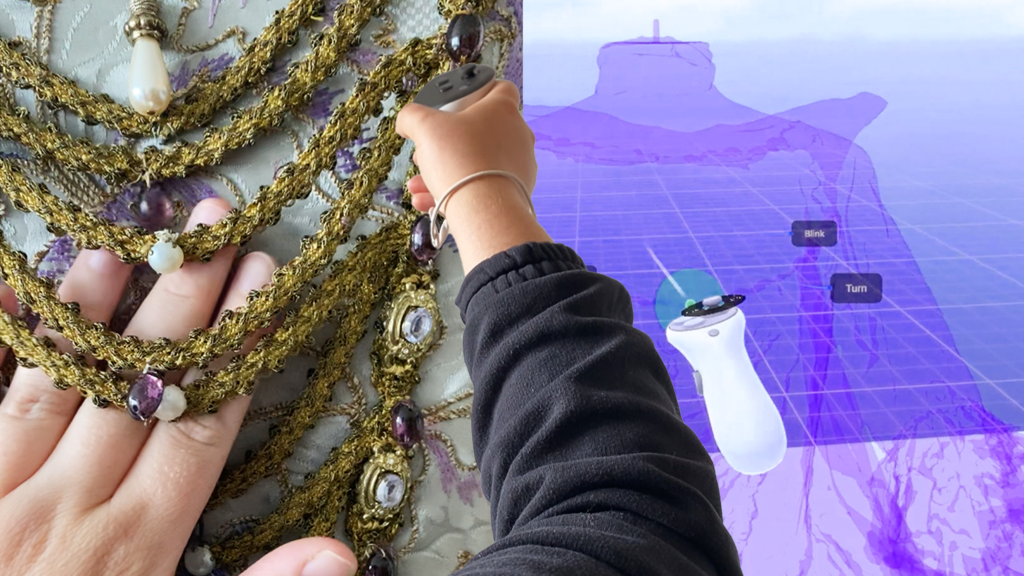S+T+ARTS Buen-TEK Residencies programme
FAQs
Throughout the open call, this page will be updated with the questions we receive from applicants to ensure all applicants receive the same information. Throughout the open call, this page will be updated with the questions we receive from applicants to ensure all applicants receive the same information.
Read our FAQs to understand more about the project, the open call process and learn about the partners involved.
¡AMPLIAMOS EL PLAZO DE LA CONVOCATORIA! Nuevo deadline: 1 de junio 2025 – 23h CEST [horario Bruselas]
ALARGÁMOS O PRAZO DA CONVOCATÓRIA! Novo prazo: 1 de junho de 2025 – 23h CEST [horário de Bruxelas].
OPEN CALL DEADLINE EXTENDED! New deadline: 1st June 2025 – 23h CEST [Brussels time].
+ Buen-TEK general info
Who are the members of the S+T+ARTS Buen-TEK European Consortium?
The S+T+ARTS Buen-TEK European Consortium is composed of 6 partner organisations (also called Liaison Mediators), from 4 countries:
- IMPAKT (Utrecht, The Netherlands), project coordinator;
- Barcelona Supercomputing Center (Barcelona, Spain);
- GLUON (Brussels, Belgium);
- HacTe – Hub of Art, Science and Technology (Barcelona, Spain);
- Sony CSL – Rome (Rome, Italy);
- TBA21 (Madrid, Spain).
Which are the South America organisations involved in S+T+ARTS Buen-TEK project?
S+T+ARTS Buen-TEK is peering with 11 South American organisations (also called Twins) located in 6 different countries:
- Argentina: Centro de Cómputo de Alto Desempeño de la UNC, CCAD-UNC
- Colombia: Más Arte Más Acción; Platohedro
- Ecuador: Centro Intercultural Comunitario Tránsito Amaguaña
- Chile: Liquenlab; Universidad del Desarrollo
- Brazil: Laboratory of Ocean Art and Science of the Oceanographic Institute of University of São Paulo; Pivô Arte e Pesquisa; Museu do Amanhã; Universidade de Fortaleza
- Peru: Alta Tecnología Andina
Which are the roles of the relevant actors in the S+T+ARTS Buen-TEK Residencies Programme?
Twins: local academic, technologic, scientific or cultural organisations hosting the artist in residency and coordinating the development of the activities related to this call, together with the European partners of the Buen-TEK Consortium. Rooted in the South American countries of implementation of the project, the Twins are in direct contact with the artists selected for the residencies, as well as the local players and communities involved.
Liaison Mediators: representatives of European Consortium organisations whose main role is to co-facilitate and accompany the residency process as a bridge-builder between all parties involved, and the safeguard of a high-quality collaboration. The liaison mediator will perform these tasks mainly in an online format, travelling to the residency location during one week (to be agreed with all parties at the kick-off of the residency programme).
Trans-local experts: profiles that support artists during the residency, supply relevant expert know-how and anchor the projects firmly within the relevant regional context, demography and history, in particular in regards to the Buen Vivir and Lo-TEK philosophies. They can be of European or South American origin, and they will have a strong affiliation with the topics and geographical area of each project.
Communities: groups of people in the close environment of the Twins. The following may be identified as communities: a specific and common knowledge and practices, a geographical location, a common cultural background, shared interest, mutual influence or affinity, or other common bonds that link the community with the Twins hosting the residency.
+ Application Process
SPECIFIC RESIDENCY QUESTIONS
Residency 2 includes two locations: must the minimum of four weeks on site be divided between both locations?
Yes. The Residency Booklet specifies that in Residency 2 “The artist is required to spend a minimum of two weeks in Salvador and two weeks in Ubatuba, for a total of 4 weeks”.
La Residencia 2 propone la interacción con 4 comunidades, será que hay que elegir entre una de las 4 o uno podrá desarrollar un proyecto que se relacione con las 4 de ellas?
Pueden trabajar con una o todas las comunidades, según los propósitos del artista.
¿Podría tener más detalle de la infraestructura que ofrece la Residencia 7?
Cuando se trabaje en las comunidades o en Inírida, donde viven comunidades indígenas que hablan español como segunda lengua, es necesario auto organizarse, lo que implica una comunicación cercana con la persona de apoyo local del museo comunitario sobre sus necesidades específicas. Esto variará considerablemente en función del artista seleccionado y del proceso o proyecto que quiera desarrollar. Al ser un lugar selvático, existen zonas que no cuentan con internet y/o señal telefónica. Sin embargo, en la zona urbana hay facilidad para movilizarse, hay hoteles, droguerías, bancos; en caso que el artista tenga una necesidad específica, es necesario planearlo con tiempo.
PROJECT PROPOSAL
What do you expect in the submission project proposal, can you give me more details?
Please go through the Guide to Applicants to get all the information you need to apply to this open call. This is the ultimate reference document to guide you through the process. Also, read carefully the Residencies Booklet where a more detailed description on each residency scope is detailed.
Can an artist submit more than one project idea?
Yes, we accept multiple submissions with a maximum of two proposals in total (per artist). Bear in mind that the proposals must be different for each residency and you need to apply twice. You are not allowed to re-submit the same proposal for multiple residencies. In case of multiple submissions, it is important to indicate the preferred residency in the Application form. If the applicant is selected by two different residencies, the applicant will be assigned to the preferred residency.
Is it required to submit entirely new projects, or are proposals for enhanced or expanded versions of existing small-scale initiatives also eligible for submission?
Projects submitted must be aligned to the general framework of the Buen-TEK open call, but also to the concrete topics and contexts of the residency you want to apply for. In the case you want to expand pre-existing initiatives, you must demonstrate the alignement with the requirements of the call and explain properly the differential and evolving nature of the project.
Can I apply without choosing a residency?
No, this is not possible. You have to apply to a residency with a project that fits the general and specific requirements and scopes.
What kind of outcomes are you expecting?
The outcomes of the S+T+ARTS residencies can be a wide range of transdisciplinary research results. A possible set of outcomes can include: Artistic, non-textual (performative) outcomes (as artworks, installations, prototypes, community initiatives…); Research outputs (research paper, new theoretical or methodological frameworks…); or Collective practices, creating lasting bonds between researchers (new interdisciplinary knowledge, new critical and analytical approaches…).
In any case, the outcomes need to be delivered in a format that can be presented to an audience as an artwork, prototype, or as documentation that opens and shows the project to an audience.
Please, read the Residencies Booklet for concrete details on each residency.
Respecto al material en concreto que se realice en esta investigación y residencia, ¿es posible tener los derechos de autor de publicaciones, material audiovisual, etc.?
Por favor, consultar el apartado 13. Propiedad Intelectual de la Convocatoria.
If I produce a research paper: do you offer links to collaborate with some magazines or research spots?
No. This is neither a commitment nor an obligation of any of the partners involved in Buen-TEK, but as many of them, both in Latin America and in Europe, are universities and research centres, they could offer their expertise and support to help you on how to proceed in publishing research results as articles.
Please, read the Residencies Booklet for concrete details on each residency.
In transdisciplinary projects, should the documentation specify what each member contributes and how they are involved?
The proposal should include all relevant information to make the project understandable. it can include, if you consider it relevant, the role or contribution of the different members involved. If you consider that a member’s contribution adds value and it’s relevant for the project, it can be interesting to highlight it.
Does the timeline in the initial project need to include precise dates?
The initial schedule and work plan should be a rough proposal of how you will approach your project during the 5 months of the residency in a realistic manner, including timelines, objectives and resources. It may include specific dates for travel or activities. A more detailed work schedule will be agreed upon by all parties involved in the residency if you are selected.
¿Puedo escribir la misma propuesta de proyecto para dos residencias distintas, claro que con pequeños ajustes específicos para la especificidad de cada sitio?
Las personas solicitantes pueden presentar un máximo de dos propuestas. En este caso, las propuestas deben ser singulares para cada residencia, no puede ser el mismo proyecto con cambios mínimos, y se debe indicar la residencia de preferencia en el formulario de aplicación.
¿Es una cuestión que la propuesta provenga de un proyecto antiguo? Como una propuesta para desarrollar, mejorar y ampliar del proyecto?
Puede presentarse con un proyecto o investigación que esté en desarrollo temprano o en una fase inicial, siempre que se alinee al enfoque temático específico de la residencia a la que aplica y al marco conceptual general del proyecto STARTS Buen-TEK (Buen vivir y Lo-TEK). Sí es necesario demostrar que su propuesta y el trabajo que pretende desarrollar durante la residencia (investigación y/o producción) darán lugar a un resultado nuevo, único y no preexistente
BUDGET
Is it possible to allocate a percentage of the budget to third-party fees?
Yes. In addition to the percentage allocated to the artist or collective (a minimum of 35%), any project-related expenses, including third-party fees, can be included.
Can the budget be used for travel to destinations other than the host institution?
Yes, if it is relevant to your project.
Should transportation costs be included in the proposed budget?
Yes, all anticipated expenses should be approximately included in the budget.
¿Es posible invitar a una persona que tiene residencia NO-permanente en europa ( tiene pasaporte mexicano y estadounidense)?
Sí. El proyecto puede trabajar/colaborar con aquellas terceras personas que considere. Los gastos vinculados a honorarios, desplazamientos, etc. de estas terceras personas deben cubrirse dentro del importe de la beca.
ELIGIBILITY
I am already involved in another S+T+ARTS Residency Programme, can I apply?
If the residency is still running in 2025, you can’t apply for the S+T+ARTS Residency Programme. One artist can only receive a grant from one residency at the same time.
Do I have to live in an eligible country to apply for the call?
The residencies are open to artists who are citizens of, or resident in, one of the following eligible countries: Argentina, Bolivia, Brazil, Chile, Colombia, Ecuador, Guyana, Paraguay, Peru, Surinam and Uruguay. You need to provide a valid passport from any eligible country or a residency permit in any eligible country or, in the application form.
Applicants that meet these conditions can be located outside the South American continent. In this case, we expect that they demonstrate a strong understanding and/or longstanding collaboration with communities and organizations of the country where the residency will be undertaken.
Is it possible to apply for a residency as a team?
You can apply as an artistic collective if your collective is formed by -at least- 50% of artists from the eligible countries. However, the application must be submitted only by one artist that meets the conditions described in the Guide for Applicants.
Can an artist apply for two different collectives?
You can risk applying with two different collectives. However, if both collectives are shortlisted you will need to abandon one project, as you can not be granted twice in the framework of ST+ARTS Buen-TEK (see incompatibilities section). This might affect the elegibility of the collective.
Can an artist apply both individually and collectively with different proposals?
Yes. Applicants can submit a maximum of two proposals. In this case the proposals must be different for each residency with the preferred residency indicated in the form. If the applicant is selected by two different Twins, the applicant will be assigned to the preferred residency. Please, be aware that you can not be granted twice in the framework of ST+ARTS Buen-TEK (see incompatibilities section).
If applying as a collective, should the CV + portfolio be submitted individually or collectively?
The form allows you to upload a PDF file for the CV section and another PDF for the portfolio section. The purpose of both documents is to present the trajectory of the collective. So, if the collective is recently created and its members have stronger individual backgrounds, it is recommended to highlight individual trajectories and optionally include a brief statement on the potential of their collaboration.
We are a collective—do we need to be legally registered as such?
No, the collective doesn’t need to have a legal status. The person presenting the project must meet the eligibility requirements (see Guidelines for Applicants) and present a fiscal number.
Is it necessary to apply for residency just in the country we’re from?
No, it is not necessary. You can apply freely to any residency.
Can I apply for a residency in my own city?
Yes, you can.
I’m a European artist partnering the project with a Southamerican artist, and working together as a duo. It would be our own choice to pay for both of our travels from our grant? Is it even allowed or practically possible?
Yes, it is allowed. Teams mixing artists from Europe and from any eligible country can apply. Take into account that at least 50% of the members of the collective must be from the eligible countries. The artist that applies on behalf of the group must be from the eligible country and will also receive the funds. In this case, you will need to include travel, subsistence, fees and every cost related to the residency from the grant you will receive (see section 6 Guide for Applicants).
ADMINISTRATIVE DOCUMENTATION
I am an artist, but I do not have a VAT/Fiscal number. Can I apply?
In this Open Call, applicants should have VAT or a Fiscal number.
The form asks for a ‘residence permit’ or valid passport. In some countries, documents called ‘residence permits’ are given to migrant people, that is not my case. Is a residence certificate from my local neighbourhood council acceptable? Also, if my passport has expired, do I need to renew it in order to apply?
You must present a valid document, either a passport or identity card (not expired). It may also be the council register or census document proving your place of residence.
He visto que se solicita adjuntar una foto del pasaporte, pero el mío se encuentra vencido actualmente. Quisiera saber si puedo igualmente adjuntar ese pasaporte vencido o, en su defecto, si es válido presentar mi cédula de identidad chilena como documento de identificación.
Se debe presentar un documento vigente. Sí puedes presentar la cédula de identidad como documento de identificación..
APPLICATION FORM
Does the application form save my information so I can return to it later?
Yes, you can save the answers of an unsubmitted form and continue editing later (answers will be stored in your local browser).
+ Residencies
Which is the duration of residencies?
The duration of each residency is 5 months, to be held between September 2025 and February 2026. The final schedule is subject to the agreement of all parties involved in the kick-off of the residency.
Do I have to be present on site during the 5 months residency?
The residencies will be developed in a hybrid format (remotely and on-site). Selected artists are asked to be present for at least 4 weeks at the host institution, a period that can be continued or divided in slots, according to the agreement made with the Twin and the Liaison Mediator at the kick-off of the residency.
Please, take a look at the Residencies Booklet, as some residencies are proposing some particular details or requirements concerning the in-place presence.
¿Es fijo que las residencias tienen que ser de 5 meses totales? ¿Existe flexibilidad en cuanto a las fechas? Al parecer yo no puedo comenzar hasta diciembre, y sumando 5 meses terminaría en abril, ¿es eso posible?
Si, la residencia debe ser de 5 meses totales a desarrollarse entre septiembre del 2025 y febrero del 2026. Dentro de este abanico existe flexibilidad de fechas. Es una residencia que puede combinar el trabajo remoto y presencial. El trabajo presencial debe ser de mínimo 1 mes (4 semanas) en el lugar (consultar la Guía de Residencias por si se especifica posibilidad de estadía más amplia en alguna de ellas. Las fechas concretas se terminarán de ajustar y acordar entre todas las partes al arranque de la residencia, si bien se debe indicar en la propuesta de proyecto presentado el plan de trabajo y calendario tentativo. Terminar en abril no sería posible.
While the call mentions a five-month period, I would like to understand whether a shorter stay of four weeks is also acceptable. If so, how would the working methodology be structured during the remaining four months?
The residency must run for 5 months, between September 2025 and February 2026, with a minimum stay of 4 weeks at the host site. A shorter stay of 4 weeks is not acceptable. You can divide the stay in different periods or do the 4 weeks in a row. In the tentative work plan requested in the project proposal you can make a first approach to this work plan and schedule. In case you are selected, a final work schedule will be agreed with all parties involved, mainly the host institution. The accommodation for these 4 weeks minimum stay is covered by the host organisation. In case of a longer stay due to project needs, it should be included in the grant amount.
Please see the Residencies Booklet as some residencies offer the possibility of a longer stay.
The methodology of this hybrid format (online / on site) will be that of follow-up and/or working meetings (online and face-to-face when you will be on site), both with representatives of the host organisation in Latam and of the European partner linked to the residency for coordination, support, etc. The figure of the translocal expert linked to each residency will also be incorporated to provide specialised support for each residency, and there will be meetings with them during the 5 months.
Durante el periodo de estadía de estas 4 semanas obligatorias en el espacio/residencia: ¿hay actividades pre organizadas de las cuales sea obligación participar?
Es muy probable que durante las 4 semanas de estadía se organicen actividades que vinculen al proyecto / artistas con el espacio, contexto y comunidades del lugar de acogida. Estas actividades pueden ser propuestas por el propio proyecto / artista, o de forma conjunta entre las diferentes partes implicadas en la residencia según necesidades de cada una de ellas.
Consultar el apartado 7 de la Guía de Aplicantes donde se indica qué se espera de los artistas seleccionados. Entre otras cosas se dice: “Participen de forma activa en el diseño, preparación y realización de un taller presencial con las comunidades locales, junto con el Twin y el Liaison Mediator”. Este taller pudiera realizarse durante estas 4 semanas de presencialidad en el espacio. Todo esto se debatirá y acordará una vez el proyecto sea seleccionado y en el arranque de las residencias. No se trata de una actividad pre-definida en su formato sino que se espera que se trabaje de forma conjunta, situada y colaborativa entre las diferentes partes vinculadas a la residencia.
What is the language of the residency?
The language of the residency is the local language. However, the primary working language within the S+T+ARTS Buen-TEK project will be English (learning programme, general meetings and some showcases). We will include Spanish and Portuguese in our communication material. Take into account that a Residency Host Institution might have individual requirements. Please consult the Residencies Booklet to find out more.
What do you expect from my participation in the residencies programme?
We expect you to:
- Deliver a final outcome;
- Participate in monthly coordination and follow-up meetings;
- Participate in the design and implementation of a workshop with local communities;
- Attend and participate in the Buen-TEK Learning Programme;
- Participate in the dissemination and showcase events (online and on-site) organised in the framework of the project.
- Provide grounded information for the Impact Assessment of the residencies programme submitting one field diary and being available for interviews.
- Submit visual, textual, or any other media documentation for dissemination and communication purposes.
More information in the Guide for Applicants.
The call states that resident artists must be available for dissemination or showcase events in the host country and/or in Europe, so I wonder if travel and accommodation for those events are supposed to be covered by the residency grant.
In the case of a dissemination activity or showcase linked to the residency you are applying for, the date of the event will be agreed with the host institution (Twin). If this date falls outside the period during which the artist must be physically present at the place of residence (minimum 4 weeks), travel and accommodation costs will be covered by the host institution, not the artist grant.
In the case of dissemination activities outside the residency context, travel, accommodation and subsistence costs will be covered by the host institution/event organiser.
IMPORTANT NOTE: Please note that this FAQ will be updated as we receive enquiries. Please check back regularly.



S+T+ARTS Buen-Tek is co-funded by the European Union, under the STARTS – Science, Technology and Arts initiative of DG CNECT (GA no. LC- 03568052). Views and opinions expressed are those of the author(s) only and do not necessarily reflect those of the European Union or DG CNECT. Neither the European Union nor the granting authority can be held responsible for them.
